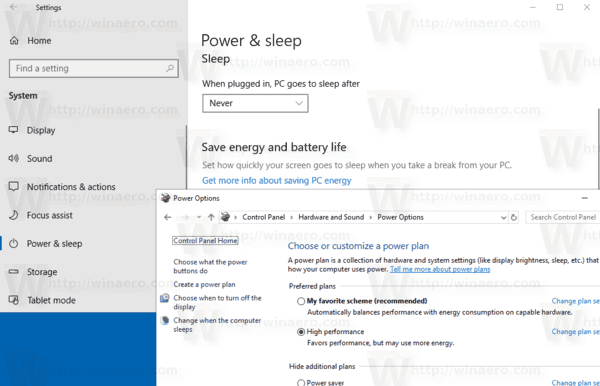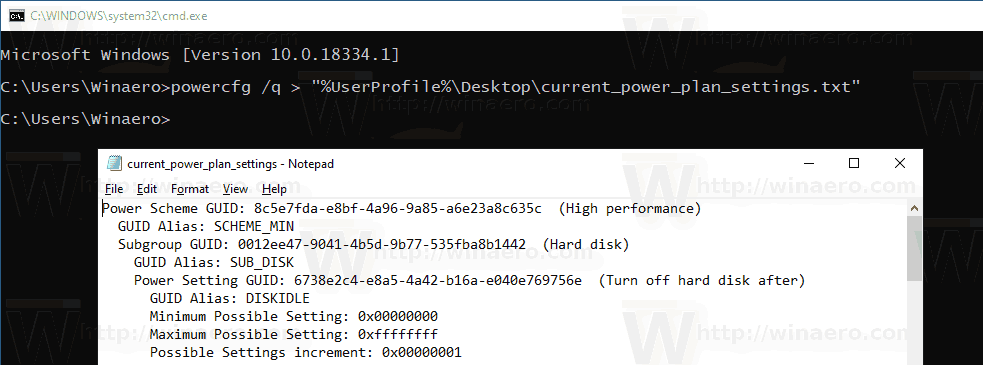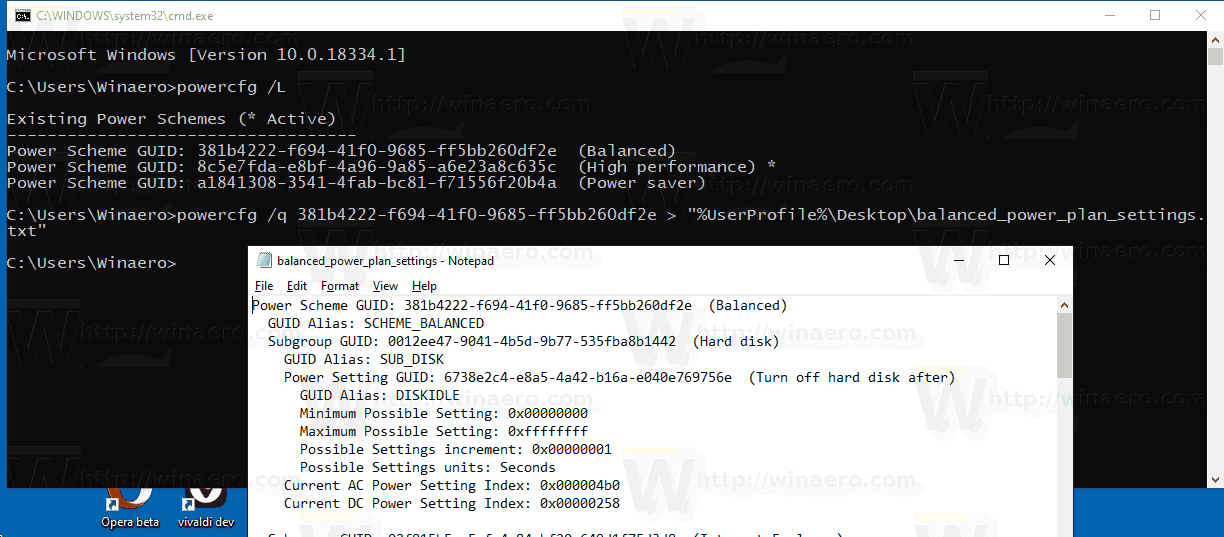A power plan in Windows is a set of hardware and system options that defines how your device uses and preserves power. There are three built-in power plans in the OS. Your PC can have additional power plans defined by its vendor. Also, you can create a custom power plan that will include your personal preferences. Today, we will see how to save all power plan settings to a text file to quickly review them in a useful way.

Windows 10 comes with a new UI again to change the operating system's power related options. The classic Control Panel is losing its features and probably will be replaced by the Settings app. The Settings app has already got many settings which were exclusively available in the Control Panel. For example, the battery notification area icon in the Windows 10 system tray was also replaced with a new Modern UI.
Advertisеment
If you want to review or customize the settings of a power plan, you need to use the Power Options classic applet in the Control Panel. It requires expanding every category and option. Alternatively, you can save all its settings to a text file and read it in your favorite text editor. This can be done with the console tool powercfg.
This console utility can adjust many parameters related to power management. For example, powercfg can be used:
- To sleep Windows 10 from the command line
- To change the power plan from the command line or with a shortcut
- To disable or enable the Hibernate mode.
- Powercfg can be used to delete a power plan.
- Powercfg can be used to rename a power plan.
To save all power plan settings to a text file in Windows 10, do the following.
- Open a new command prompt
- Type the following command:
powercfg.exe /q > "%UserProfile%\Desktop\current_power_plan_settings.txt". - Open the
current_power_plan_settings.txtfile located in your Desktop folder with Notepad to see all options of the active (current) power plan.
Tip: Replacing the /q option with /qh to include the hidden option to the output, i.e. powercfg.exe /qh > "%UserProfile%\Desktop\power_plan_settings.txt".
Save All Settings of a Specific Power Plan To a Text File
- Open a new command prompt
- Get the list of available power profiles with the command
powercfg.exe /L.
- Note the GUID value for the power plan you want.
- Now, run the command
powercfg.exe /q GUID > "%UserProfile%\Desktop\power_plan_settings.txt". Substitute the GUID portion with the actual GUID value.
That's it.
Related articles:
- Rename Power Plan in Windows 10
- Enable Ultimate Performance Power Plan in Windows 10 (Any Edition)
- How to Create a Power Plan in Windows 10
- How to Delete a Power Plan in Windows 10
- Restore Default Power Plans in Windows 10
- How to Export and Import a Power Plan in Windows 10
- How to Restore Power Plan Default Settings in Windows 10
- How to open advanced settings of a power plan directly in Windows 10
- Add Switch Power Plan context menu to Desktop in Windows 10
- How to change the power plan from the command line or with a shortcut
Support us
Winaero greatly relies on your support. You can help the site keep bringing you interesting and useful content and software by using these options:
